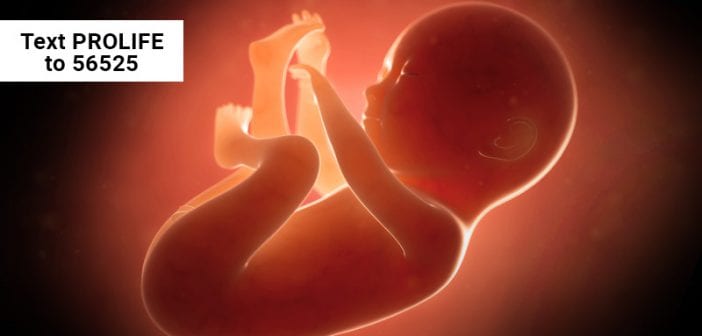A newly published study offers further insight into the preborn baby’s experience of pain. The study, conducted by researchers in Brazil, did not directly address the question of whether babies in the womb feel pain (they do), but instead sought to understand how facial expressions might provide indicators about the baby’s experience and found that babies undergoing an injection demonstrate facial expressions similar to those of newborns experiencing pain.
With the rise of 4-D ultrasound technology, researchers could analyze the facial expression of preborn babies before and after stimuli. The study involved 13 babies in the third trimester. Five were in the group deemed the “acute pain” group. These were described as babies with diaphragmatic hernia, which required prenatal surgery (fetoscopic endoluminal tracheal occlusion). The faces of these babies were filmed for 45 seconds before and after receiving a preoperative anesthetic injection in the thigh.
The other eight babies in the study were divided into two groups: a control group that received no stimulus and a control group that was exposed to a loud noise that did not cause acute pain. Both of these groups, like the acute pain group, had their facial expressions filmed for 45 seconds before and after any change in environment (or in the case of the control group, no changes were made).
To quantify the facial expressions, they were evaluated using the Neonatal Facial Coding System, which assesses changes in facial expression that can indicate the level of pain a newborn baby feels. The features included in the coding system are: brow lowering, eyes squeezed shut, deepening of the nasolabial furrow, open lips, horizontal mouth stretch, vertical mouth stretch, lip purse, taut tongue, tongue protrusion, and chin quiver. For the study, researchers also considered yawning and neck deflection, which have been observed as a facial change in response to stimuli in preborn babies.
After gathering footage of all 13 babies, the researchers took screenshots that captured all facial expressions. These images were independently scored by researchers who did not know to which group any of the images belonged. For each of the 12 features, researchers provided a score. The results: None of the babies in the control groups scored higher than four, while the babies undergoing an anesthetic injection all scored at least a five.
From these results, researchers concluded that preborn babies exhibit facial changes consistent with those of a newborn baby in pain. Researchers wrote that the “inability to communicate does not negate the possibility that a human […] experiences pain” and that the “acute nociceptive-related [pain-related] facial response […] may have been experienced as pain.”
Other studies have shown that the newborn child’s experience of pain may be more intense than an adult’s, a phenomenon that may well extend to children in the womb shortly before birth. Additionally, science demonstrates that preborn babies may feel pain in some capacity long before the third trimester, a fact that even a pro-abortion researcher was forced to admit.
The researchers involved in the most recent examination of fetal pain suggested that further study should be conducted to understand if enhanced management of postoperative pain is needed for babies like those in the study who underwent intrauterine surgery. This consideration highlights the inhumanity of abortion from the perspective of the unimaginable pain a child may experience when violently killed in the womb. This is why Pro-Life activists in Texas urged the Texas Legislature to ban elective abortion after 20 weeks, the time at which children undeniably feel the pain of abortion.
Some may ask if anaesthetizing a child in the womb means that killing that child in a violent abortion is then morally acceptable. This is fundamentally wrong. What the capacity for pain in the preborn child should tell us above all is that the child in the womb shares our common humanity and the Right to Life. The pain of abortion is barbaric and stomach-churning. But that is not what makes abortion wrong and that is not why we are fighting to end elective abortion in Texas. The reason abortion is wrong is that abortion destroys an innocent human life.


